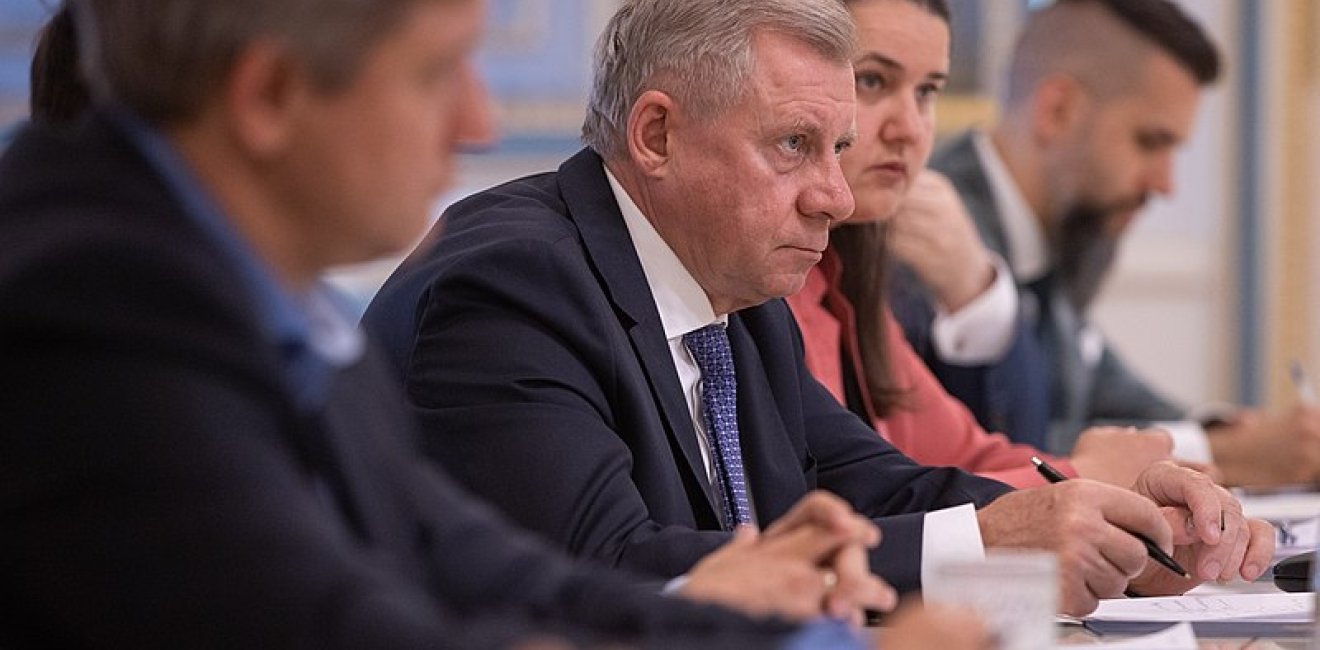
A blog of the Kennan Institute
BY VADYM SYROTA
In the summer of 2019, U.S. investors, suffering from a heat wave, immersed themselves in analyzing ways to better invest their money. Behind this concern was the expectation that the Federal Reserve would lower interest rates further. It should be noted that the cumulative amount of negative-interest-rate debt across the globe was estimated at approximately U.S. $15 trillion in August 2019. Furthermore, the interest rates of the world’s leading central banks, which serve as indicators of the value of money, suggest that “the age of low profits” won’t end soon. Making a decent profit from low-risk investment becomes much trickier in this environment. As a result, investors searching for yields are keen to invest funds in riskier instruments. To wit: U.S. investors have recently been plowing funds into emerging markets, including sovereign debt.
Thus, it was not surprising to learn that investors are snapping up exotic currencies, such as the Egyptian pound and Ukrainian hryvnia. Amid rising concern over a possible recession and deepening trade wars, they seek assets with little correlation to global financial markets. And because fluctuations in the exchange rates of these currencies are less connected to economic fundamentals, investors hope to find in them a “safe haven” during periods of distress in the global economy. At first glance, Ukraine’s assets might appear suitable to just such investments. In its June 2019 Financial Stability Report, Ukraine’s central bank stated that the systemic risks to financial stability were near an all-time low and that macroeconomic conditions were favorable for the banking business. Unfortunately, analysts at the world’s top financial institutions were not so optimistic. In September 2018, experts at the Japanese bank Nomura Holdings Inc. opined that seven emerging economies, including Ukraine, were at risk of an exchange rate crisis.
Investors, for their part, have a seemingly obvious alternative in the form of investing in sovereign debt. Because government bond trading dominates the financial services offered by U.S. financial centers, the option to invest in Ukraine’s sovereign debt (rather than the country’s other assets) looks like a no-brainer to Wall Street. According to local financial experts, the minimum affordable yield to maturity of Ukraine’s dollar-denominated assets is 15 percent, with the risk premium accounting for as much as 5–6 percent. The central bank’s interest rate (17 percent) is considerably higher than that of other leading monetary regulators. For instance, the U.S. federal funds rate is 2.25 percent. Near-zero rates are currently offered by the European Central Bank and the Bank of Japan. Even the Russian central bank’s key rate was fixed at 7.25 percent (as of August 1, 2019). High interest rates affect the value of sovereign bonds, spurring asset managers to take on risk.
In this scenario, it would be a useful exercise to evaluate Ukraine’s ability to repay its debt within one or two years. According to the central bank’s Financial Stability Report, by the start of 2021 Ukraine must make payments totaling U.S. $14 billion in foreign exchange repayments on public debt. Payments on eurobonds are responsible for the lion’s share of this indebtedness, accounting for U.S. $4.1 billion, or 29 percent of the entire debt. These eurobonds are mostly held by specific actors (“vulture investors”) who deal in risky investments by choice because of the potentially large payout. Ukraine’s deal with creditors to restructure its foreign debt in the summer of 2015 was a breathtaking and unusual piece of action that was watched by investors across the globe.
Domestic foreign exchange government bonds are the second largest group of Ukraine’s sovereign debts to be repaid by the beginning of 2021. The total amount owed is U.S. $3.8 billion, or 29 percent of the entire amount to be paid back. Unfortunately, some doubts arise because of illicit actors dominating among the bondholders. Some experts argue that the ill-gotten gains of the family of ex-president Viktor Yanukovych were invested in just such sovereign debt, which is shielded from foreign exchange rate fluctuations. It is also presumed that certain unknown residents of Russia form another possible group of investors. In short, a considerable part of Ukraine’s near-term payments on its external public debt will go to shadow actors serving as bondholders.
On the other hand, domestic government bonds denominated in local currency (the hryvnia) are also tremendously popular among foreign investors. Total investments in this type of sovereign debt had skyrocketed as of August 1, 2019, increasing by about 13.5 times compared to the beginning of the year. It is thought that by issuing such expensive bonds, the government is trying to cover existing budgetary shortfalls and also make payments on current sovereign debt. Excessive recourse to this financial tool resulted in the issuance of these bonds in a volume that, by mid-July 2019, had exceeded the annual cap. Thus the equivalent of a Ponzi scheme has been created in Ukraine’s public finances, enormously increasing risks to the country’s financial stability.
The situation just described meshes nicely with the concerns expressed by officials at the Bank of International Settlements. Their modern version of the “original sin” problem (the riskiness of investing in the sovereign debt of developing countries) overlaps with uncertainty in the hryvnia exchange rate forecasts. In light of the deficit in the current account of the balance of payments predicted by Ukraine’s central bank in July’s Inflation Report, which ranges from U.S. $3.8 billion in 2019 to $6.3 billion in 2021, a possible currency devaluation now appears to be spring-loaded. And because of the excessive level of financial dollarization in Ukraine, estimated at 40 percent (the natural level would be 20 percent), every stage of a currency devaluation would result in an economic disaster.
So the main task of President Zelenskyy’s newly formed government will be to build enough foreign exchange reserves to meet the repayment schedule of public debt obligations, mostly those held by shadow actors. From an investor’s perspective, the future profits of even experienced vulture fund managers would appear to be under threat.
Author


Kennan Institute
After more than 50 years as a vital part of the Wilson Center legacy, the Kennan Institute has become an independent think tank. You can find the current website for the Kennan Institute at kennaninstitute.org. Please look for future announcements about partnership activities between the Wilson Center and the Kennan Institute at Wilson Center Press Room. The Kennan Institute is the premier US center for advanced research on Eurasia and the oldest and largest regional program at the Woodrow Wilson International Center for Scholars. The Kennan Institute is committed to improving American understanding of Russia, Ukraine, Central Asia, the South Caucasus, and the surrounding region through research and exchange. Read more

Explore More in Focus Ukraine
Browse Focus Ukraine
Talking to the Dead to Heal the Living

Ukrainian Issue in Polish Elections


